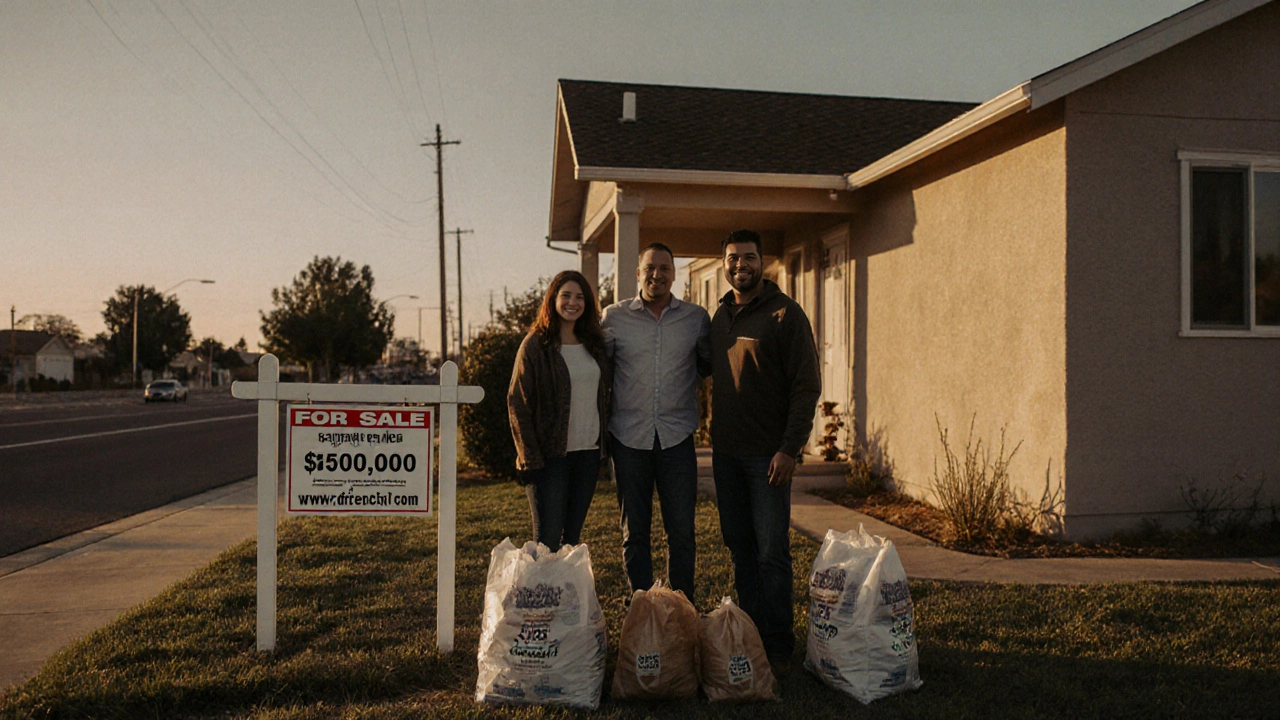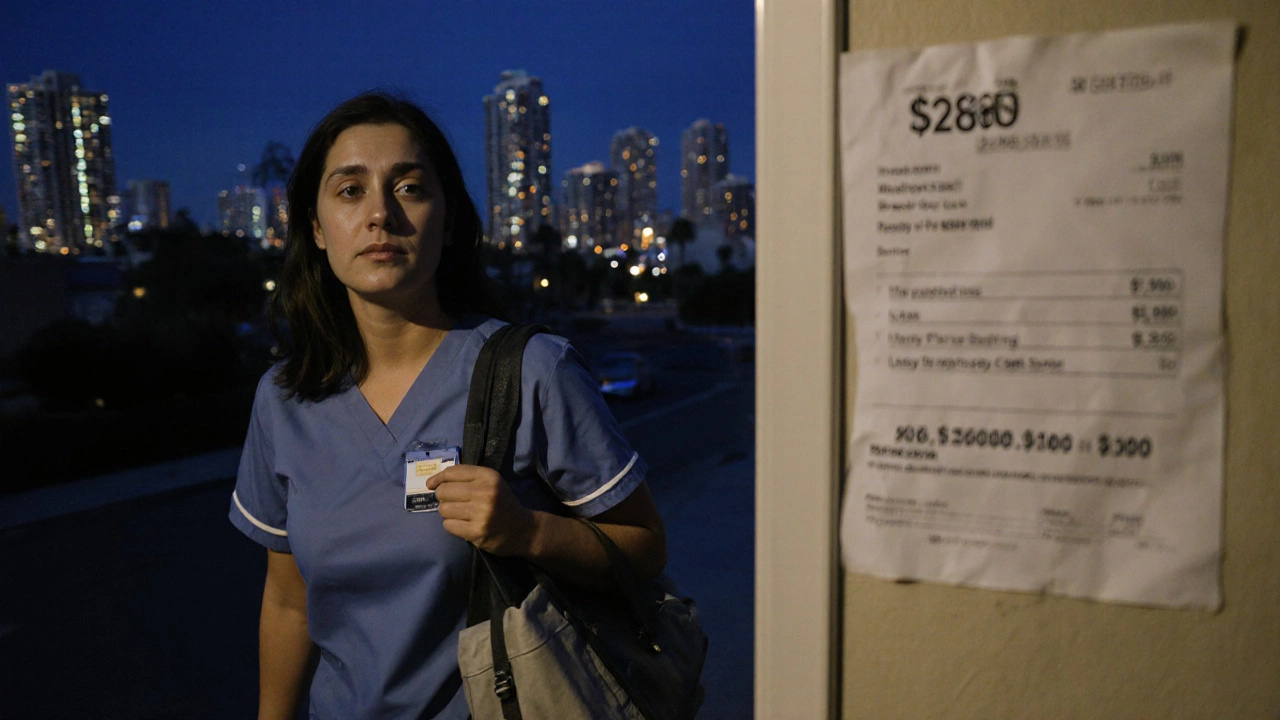What Is the Hardest State to Live in Financially in 2025?
 Nov, 17 2025
Nov, 17 2025
California Housing Affordability Calculator
California has the highest median home price ($812,000) and rents in the U.S. This calculator shows if your income can afford basic housing based on 2025 data.
Enter your income and location to see if you can afford housing
Key 2025 Data
Living paycheck to paycheck isn’t just a story-it’s the daily reality for millions across the U.S. But not all states are created equal when it comes to financial pressure. While some places offer affordable housing, low taxes, and decent wages, others make it nearly impossible to get ahead-even with a full-time job. In 2025, California stands out as the hardest state to live in financially.
Why California Tops the List
California has the highest median home price in the nation: $812,000 as of Q3 2025, according to the California Association of Realtors. That’s more than double the national median. Even in cities like Fresno or Bakersfield, where people expect lower costs, a modest three-bedroom home now costs over $500,000. Rent isn’t much better. A one-bedroom apartment in Sacramento averages $2,100 a month-up 18% since 2022. For someone earning $60,000 a year, that’s nearly half their income just on rent.
And it’s not just housing. The state’s income tax rate tops out at 13.3%-the highest in the country. If you make $100,000, you’ll pay over $12,000 in state income tax alone. Add sales tax (7.25% minimum, often higher with local surcharges), property tax, and the cost of gas-California has the most expensive fuel in the U.S.-and you’re left with little breathing room.
What You’re Paying For (And What You’re Not)
People often assume high costs come with better services. But in California, that’s not always true. Public schools in many areas are underfunded. The average class size in Los Angeles Unified is 34 students per teacher. Public transit is unreliable outside of San Francisco and San Diego. Waiting for a bus in San Bernardino can take 45 minutes. And healthcare? While the state offers Medi-Cal, finding a doctor who accepts it is getting harder. Many providers have stopped taking new patients on public insurance.
Meanwhile, the cost of essentials keeps rising. A gallon of milk costs $5.25 on average. A loaf of bread? $5.75. A basic doctor’s visit without insurance runs $250. And if you need a prescription? The state has the highest drug prices in the country, according to the Peterson Center on Healthcare.
Other States That Are Crushing Finances Too
California isn’t alone. Hawaii ranks second in financial hardship. Its cost of living is 124% higher than the national average. Groceries cost nearly twice as much as on the mainland. A simple meal for two at a mid-range restaurant? $75. Housing is even worse-median home price: $1.1 million.
Washington D.C. and New York are close behind. In D.C., a studio apartment costs $2,300. In New York City, even a one-bedroom in the outer boroughs starts at $2,800. But these places have higher average incomes. In California, median household income is $84,000-well below what’s needed to cover basic expenses comfortably.
Florida and Texas may look cheaper on paper, but they’re not safe havens. In Florida, property insurance premiums have jumped 78% since 2020 due to hurricane risks. In Texas, utilities are among the highest in the nation because of extreme heat and unreliable grid infrastructure. A summer electric bill in Houston can hit $400.

Who Gets Left Behind
It’s not just low-wage workers. Teachers, nurses, and firefighters in California are moving out. A registered nurse in San Diego earns $90,000 a year-top pay for the profession-but still spends 60% of their income on housing. Many now commute two hours from inland cities like Riverside just to afford a place to live.
Retirees on fixed incomes are hit hardest. Social Security doesn’t adjust for California’s cost of living. A retiree living on $2,000 a month from Social Security has to choose between paying rent, buying medicine, or eating well. Food banks in Los Angeles and Oakland report a 40% increase in senior clients since 2023.
What You Can Do If You’re Stuck
If you’re living in California and feeling the squeeze, here’s what actually works:
- Consider co-living or shared housing. Platforms like Roomies and Cohost connect people looking to split rent and utilities-often cutting housing costs by 40%.
- Move to a lower-cost county. San Joaquin, Kern, or Imperial counties offer homes under $400,000 and rent under $1,500. Commute times are longer, but you’ll save thousands a year.
- Apply for housing vouchers or utility assistance. California’s CalFresh and LIHEAP programs help low- and middle-income families. Many don’t apply because they think they earn too much-but the income limits are higher than most realize.
- Work remotely for a company based outside California. A software developer in Fresno who works for a Texas-based firm can earn $110,000 without paying California state tax.

The Bigger Picture
California’s financial crisis isn’t accidental. It’s the result of decades of underbuilding housing, high regulatory costs, and a tax system that doesn’t scale with inflation. The state added just 280,000 housing units between 2015 and 2025 while growing its population by 1.5 million. That gap is why prices keep climbing.
But here’s the truth: you don’t need to move to survive. You just need to know where the pressure points are-and how to outmaneuver them. For many, the answer isn’t leaving the state. It’s changing how you live in it.
What’s Next for California?
New laws passed in 2024 aim to fix the housing crisis. SB 10 allows higher-density housing near transit hubs. AB 1206 fast-tracks permits for ADUs (accessory dwelling units). Early results show a 12% increase in new housing permits in Los Angeles and San Jose. But it will take years to make a real difference.
Until then, the financial squeeze continues. For now, California remains the hardest state to live in-not because it’s unlivable, but because the system is rigged against the middle class.
Is California really the most expensive state to live in?
Yes, based on overall cost of living, housing, taxes, and essentials. While Hawaii has higher grocery and utility costs, California’s housing prices and income tax burden affect far more people. A 2025 MIT Living Wage Calculator shows you need $82,000 a year to survive in Los Angeles-more than in any other major U.S. city.
What state is the cheapest to live in?
Mississippi is the cheapest state overall, with a cost of living 15% below the national average. Housing is the biggest factor-median home price is $175,000. But wages are also low. The median income is $48,000, so affordability doesn’t always mean financial security.
Can you live in California on $50,000 a year?
It’s possible, but only if you live far from major cities, share housing, and rely on public assistance. In places like Redding or Chico, you might find a studio for $1,200 and keep food costs under $300. But you’ll have no savings, no emergency fund, and no room for unexpected expenses like car repairs or medical bills.
Why are taxes so high in California?
California funds public services like education, healthcare, and infrastructure through high income taxes. The top tax rate kicks in at $628,000 for single filers. The state also has no cap on property tax increases for new buyers, which pushes prices even higher. The system is designed to redistribute wealth, but it’s squeezing the middle class hardest.
Should I move out of California to save money?
If you can work remotely or find a job in a lower-cost state, yes. States like Georgia, Tennessee, and Arizona offer lower taxes, cheaper housing, and similar job markets. But consider the emotional cost-leaving family, friends, and familiar networks. For some, the savings aren’t worth the disruption. For others, it’s the only way to breathe again.
